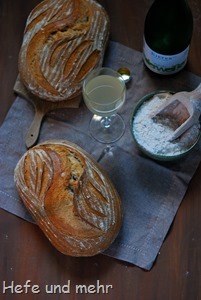 Two years ago I had the idea to bake a bread which is only leavened by the yeast of a young wine (Federweißer). That worked good and was delicious, as you can see at this great breads of others bloggers. When I planned what to bake for the goodby party of my favourite ex-colleague (it is a double ex as we both have left now) there was again a flask of Federweißer sitting on the counter. The dearest was not around to rescue his beloved wine from misuse and so a not negligible amount of it was used to make a rye poolish. To give the bread a hearty flavour, I prepared a sourdough as well.
Two years ago I had the idea to bake a bread which is only leavened by the yeast of a young wine (Federweißer). That worked good and was delicious, as you can see at this great breads of others bloggers. When I planned what to bake for the goodby party of my favourite ex-colleague (it is a double ex as we both have left now) there was again a flask of Federweißer sitting on the counter. The dearest was not around to rescue his beloved wine from misuse and so a not negligible amount of it was used to make a rye poolish. To give the bread a hearty flavour, I prepared a sourdough as well.
The bread developed a good flavour with a slight sweet note from the young wine. The crumb was soft and the crust was crunchy. I hope, that you believe me that, as I can not provide a crumb shot because the bread was a present which I could not cut in advanced, of course.

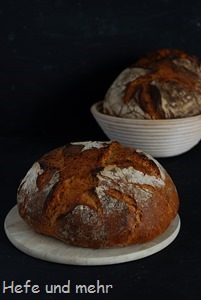
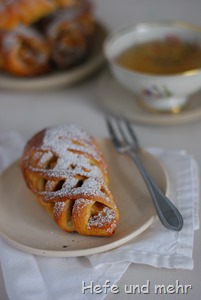 Cornucopia, the horn of plenty, is a symbol of abundance and nourishment in the classical myths and is often associated with autumn. And when I prepared my little pastries I look on the nuts and apples and that little cornucopia would be the right way to celebrate autumn plenty.
Cornucopia, the horn of plenty, is a symbol of abundance and nourishment in the classical myths and is often associated with autumn. And when I prepared my little pastries I look on the nuts and apples and that little cornucopia would be the right way to celebrate autumn plenty.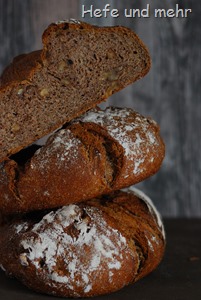
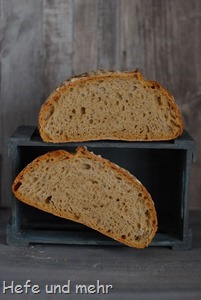
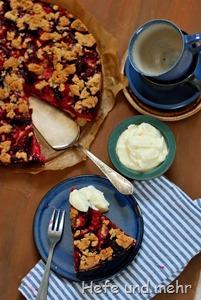 Der Liebste ist puristisch, wenn es um
Der Liebste ist puristisch, wenn es um 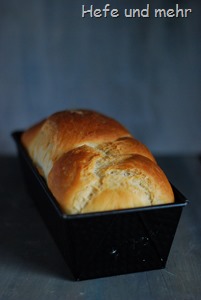 I do both rather seldom: Baking soft sandwich bread and baking during the week. Normally my bread baking day is at the weekend and so I need special circumstances to take the flour from the cupboard during a working week. But an tooth emergency leaded to a small oral surgery and subsequently to chewing problems. After three days of soups and purees I was longing for a really soft bread which is easy to chew.
I do both rather seldom: Baking soft sandwich bread and baking during the week. Normally my bread baking day is at the weekend and so I need special circumstances to take the flour from the cupboard during a working week. But an tooth emergency leaded to a small oral surgery and subsequently to chewing problems. After three days of soups and purees I was longing for a really soft bread which is easy to chew.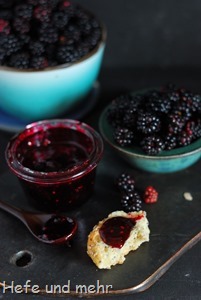 The sunny and hot days of the last week turns the first blackberries into dark and delicious treats. And so we went to pick berries early on Saturday morning . Natures plenty was very overwhelming and in little more then an hour we picked three kilogram. And because I read Christine Ferbers “Marmeladenbibel” we picked some red, unripe blackberries as well. The reason for this the fact that blackberries contain less pectin then red currants or blueberries. Adding some unripe fruits increase the pectin content because they contain much more pectin then ripe fruits. They add some acidity as well which support the gelling process as well.
The sunny and hot days of the last week turns the first blackberries into dark and delicious treats. And so we went to pick berries early on Saturday morning . Natures plenty was very overwhelming and in little more then an hour we picked three kilogram. And because I read Christine Ferbers “Marmeladenbibel” we picked some red, unripe blackberries as well. The reason for this the fact that blackberries contain less pectin then red currants or blueberries. Adding some unripe fruits increase the pectin content because they contain much more pectin then ripe fruits. They add some acidity as well which support the gelling process as well.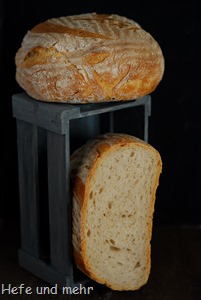
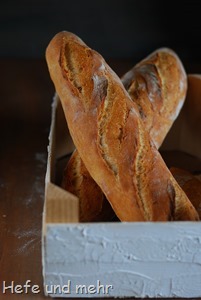 Another wish for the Bread Baking Course was Baguette. And
Another wish for the Bread Baking Course was Baguette. And